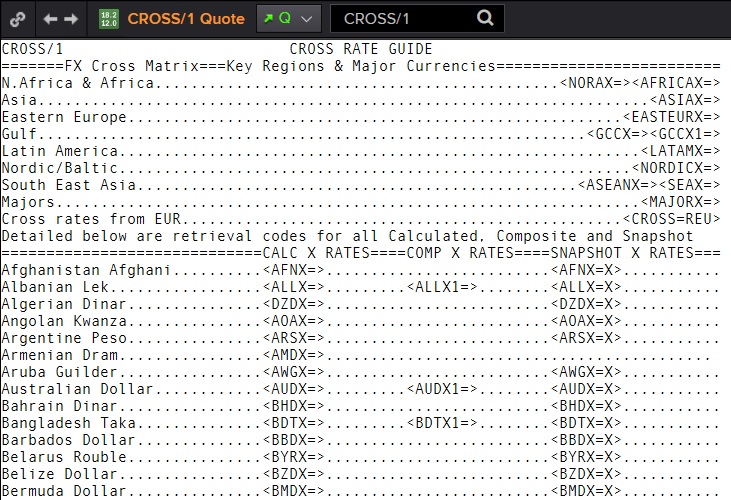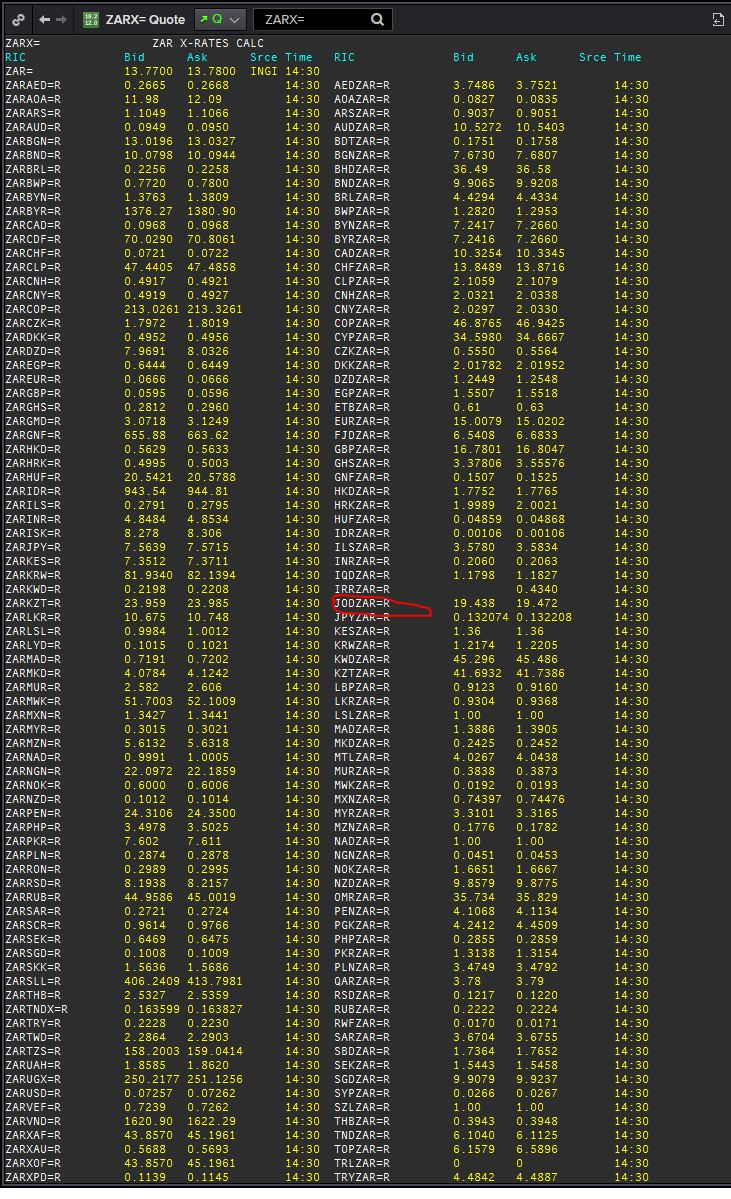We have developed an API connecting to the Reuters TREP platform to pull market rates from Reuters in Real-time. However, by default, the rates returned are based on USD, we need this to be returned in another currency (ZAR, South African Rand). We are connecting to TREP via the EZD platform. Would you be able to advise me on how to accomplish this?
Thank you,





